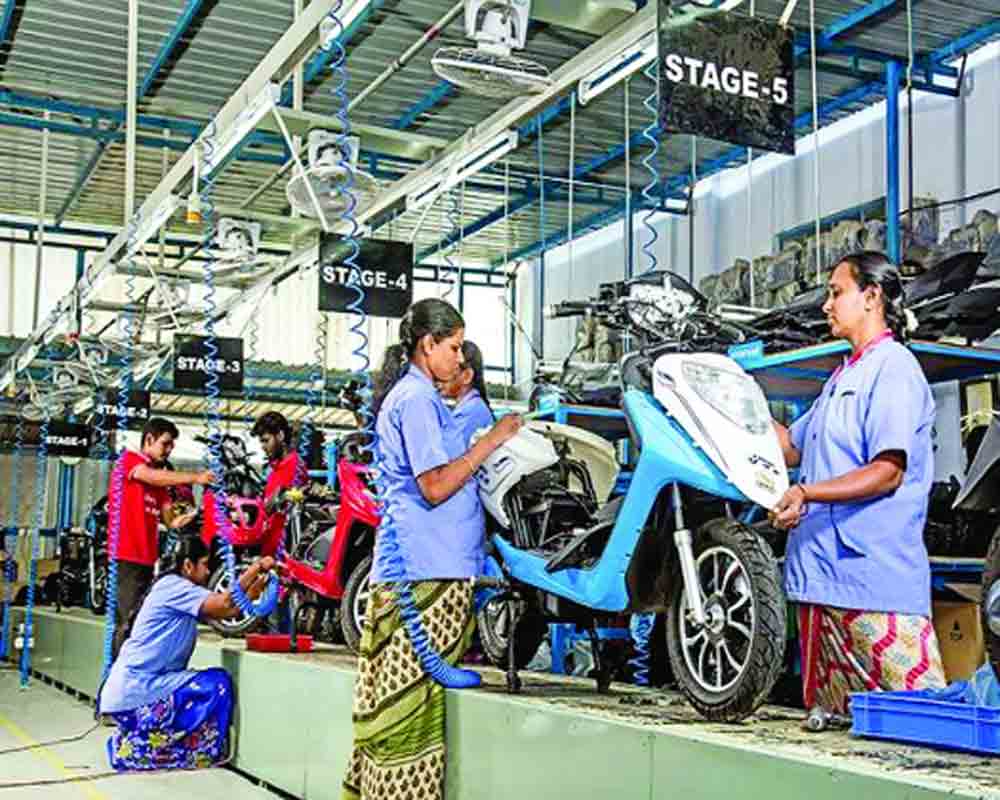Gender inequality is a harsh reality of the global labour market, with almost one in four women unable to find a job, compared with 16.6 per cent of men
While, in 2016, an ILO and Gallup opinion poll in 142 countries and territories, found that a total of 70 per cent of women and 66 per cent of men would prefer that women work at paid jobs, which included a majority of women who are not currently in the workforce, and that it holds good in almost all regions worldwide, including the Arab regions, which traditionally have a low rate of women’s labour force participation. Now, despite such willingness for women to go for paid work, the women’s global labour force participation rate is now over 50%, compared to 80% for men. In India, it is just 37% (PLFS-2022-23).
Moreover, around 2.4 billion women of working age are being deprived of equal economic opportunity, as 178 countries still maintain legal barriers that prevent their full economic participation. In 86 countries, women face some form of job restriction and 95 countries do not guarantee equal pay for equal work. The gap between men's and women’s expected lifetime earnings globally is US$172 trillion, nearly two times the world’s annual GDP (Women, Business and Law, World Bank, 2022). While, globally, for each dollar of labour income men earn, women earn only 51 cents, which in low and lower-middle-income countries further go down to 33 cents and 29 cents on the dollar, respectively (ILO,2023).
Further, women face several limitations in their job search, confront different challenging situations than men, and are unable to take up employment on short notice, leading to the ‘jobs gap’, which stands significantly higher for women at 15%, as against men’s 10.5%. Even when women secure employment, it is often a ‘last resort’ option, mainly, in the informal sector, without legal protections, social security or decent working conditions. Out of every five jobs created for women, four are within the informal economy, whereas for men, the ratio is two out of every three jobs (ILO).
The 2023 LinkedIn global data across 163 countries revealed women’s persistent skewing in the workforce across industries, with a predominant presence in Healthcare and Care Services (64.7%), Education (54.0%) and Consumer Services (51.8%), while remaining under-represented in Retail (48.7%), Entertainment Providers (48.4%), Administrative and Support Services (46.5%), Real Estate (44.7%), Accommodation and Food (43.3%) and Financial Services (42.4%), Oil, Gas and Mining (22.7%) and Infrastructure (22.3%). In the STEM occupations that are well-remunerated and expected to grow in the future, women are only 29.2% of all STEM workers. In the emerging field of AI, as of 2022, it has 30% of female talent, which is likely to have serious implications, with the creation of biased algorithms without women’s perspectives. LinkedIn data also indicated that women hold 32.2% of senior leadership positions in 2023, and continue to be outnumbered by men across all industries.
Nevertheless, as per the World Economic Forum’s 2023 Future of Jobs Survey, more than two-thirds of the organisations surveyed have implemented a Diversity, Equity and Inclusion (DEI) programme, introducing specific programs such as mentoring, sponsorship, leadership training, caregiving policies, and increased flexibility of working arrangements as a pathway to closing workplace gender gaps. The World Bank’s 2022 report, however, highlighted that the Pay, Parenthood and Workplace indicators have registered the lowest average scores, rising 0.9 and 0.7 points, respectively, in the last year, and the gains in the Parenthood indicator have largely been around paternity leave and shared parental leave.
The Senior Vice President and Chief Economist of the World Bank Group, rued that ‘women cannot achieve equality in the workplace, if they are on an unequal footing at home ...and that having children doesn't mean they are excluded from full participation in the economy’. Across the world, 118 economies guarantee 14 weeks of paid leave for mothers, and 114 of the economies mandate paid leave for fathers, but the median duration is just one week. Now, this year’s Economics Nobel laureate, Claudia Goldin’s research, asserted that women’s employment has a ‘U-shaped’ relationship’ with structural changes in the economy, as well as evolving social norms, especially about marriage and parenting. While, another researcher contended that ‘some of the gender gap in employment and earnings is due to extra barriers that women face, such as cultural norms’. Though gender roles and the pressures to conform to them vary across regions, religions and households, it is of special concern in the Middle East, North Africa, and India. While, social analysts suggest that they can be countered through behavioural change strategies by means of socialisation, communication and monitoring, targeting not only women but also their partners, parents, family and community members, who, most of the times, cast influence on attitudes and norms around women’s work, while policy-making should also be attuned to cultural norms.
Now, the Global Gender Gap Report, 2022, drew attention to the large-scale disruption of economic opportunities for women in skilling, wealth accumulation and overall well-being in order to bridge the broader gender gaps in households, societies and economies. As the labour markets get reconfigured in the post-pandemic era, apart from embarking on frontier technologies, education and capacity-building for better employability, productivity and wages, there should also be increasing efforts in establishing new working arrangements to enable men and women to balance caregiving responsibilities around work.
(The writer is an educationist, freelance writer, and an ex-civil servant, views are personal)
























